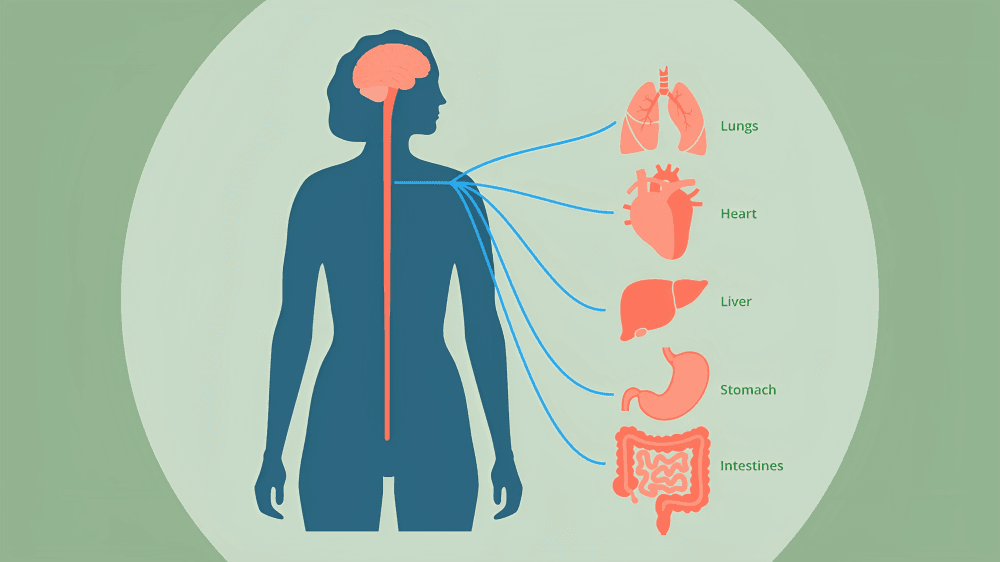
“
The science of the mind-body connection uncovers how mental and emotional states influence physical health in powerful ways. Backed by research in psychology, neuroscience, and medicine, this field explains how stress, joy, trauma, and mindfulness directly affect the body’s systems—from immunity to heart rate. 1
1
”
Ancient Greek physician Hippocrates believed the mind-body connection was central to healing, suggesting emotional balance and mental clarity were necessary to support physical recovery from various diseases. 1
Studies show stress weakens the immune system by altering white blood cell activity, proving how negative mental states directly impact physical health and resistance to illness or infections. 2
Positive emotions like gratitude and joy boost endorphin release in the brain, which not only improves mood but also helps relieve physical pain and reduce muscle tension significantly. 3

The vagus nerve is a key player in the mind-body connection, transmitting emotional signals from the brain to the heart, lungs, and digestive system during stress or calm.
Chronic anxiety can disrupt digestion by interfering with gut bacteria and increasing inflammation, proving how emotional stress can damage the gastrointestinal tract and nutrient absorption in the long term. 4
Brain imaging shows mindfulness meditation changes the brain’s structure, especially the prefrontal cortex, improving decision-making and self-awareness and reducing stress-related physical disorders. 5
People who practice yoga regularly have shown lower levels of cortisol, the stress hormone, leading to improved immune function, better sleep, and fewer chronic pain complaints over time. 6
Laughter reduces stress hormones and increases immune cells and infection-fighting antibodies, proving that humor and positive social interactions directly support physical health and mental resilience. 7
Cardiologists found patients with optimistic mindsets had lower risks of heart disease and recovered faster after surgery, reinforcing the powerful effect of mental health on cardiovascular function. 8

Cognitive-behavioral therapy (CBT) not only treats mental disorders but also improves physical symptoms like headaches and chronic fatigue by reshaping negative thinking patterns affecting the body.
Breathing exercises stimulate the parasympathetic nervous system, promoting relaxation and reducing heart rate, which demonstrates how breath control links mental awareness with physical calmness. 9
Gut health influences mental well-being due to the gut-brain axis; serotonin, a mood-regulating chemical, is mostly produced in the gut, emphasizing the importance of diet for mental health. 10
Visualization techniques used by athletes stimulate the same brain areas as physical action, helping performance, recovery, and healing by connecting mental imagery with physical response. 11
People who maintain strong social bonds have lower levels of inflammation markers, such as C-reactive protein, revealing how emotional connections reduce physical stress reactions inside the body. 12

Tai chi, a meditative movement practice, reduces arthritis symptoms and improves balance by aligning the mind with body movement, helping calm mental noise and strengthen joints.
Gratitude journaling improves sleep quality and heart rate variability, showing a direct link between emotional focus and physical markers of well-being, such as balanced nervous system function. 13
Psychologist Carl Jung emphasized wholeness of mind and body, stating inner peace and physical health cannot be separated, marking his work as a foundational voice in holistic healing. 14
The placebo effect is scientific proof of the mind-body connection, where patients experience real healing through belief alone, indicating how thoughts can trigger physiological changes. 15
PTSD sufferers often experience chronic physical pain due to hyperactive stress responses, confirming how unresolved psychological trauma directly results in long-term body tension and illness. 16
People who express emotions freely tend to have stronger immune responses compared to those who suppress them, indicating that emotional openness fosters physical resilience. 17


